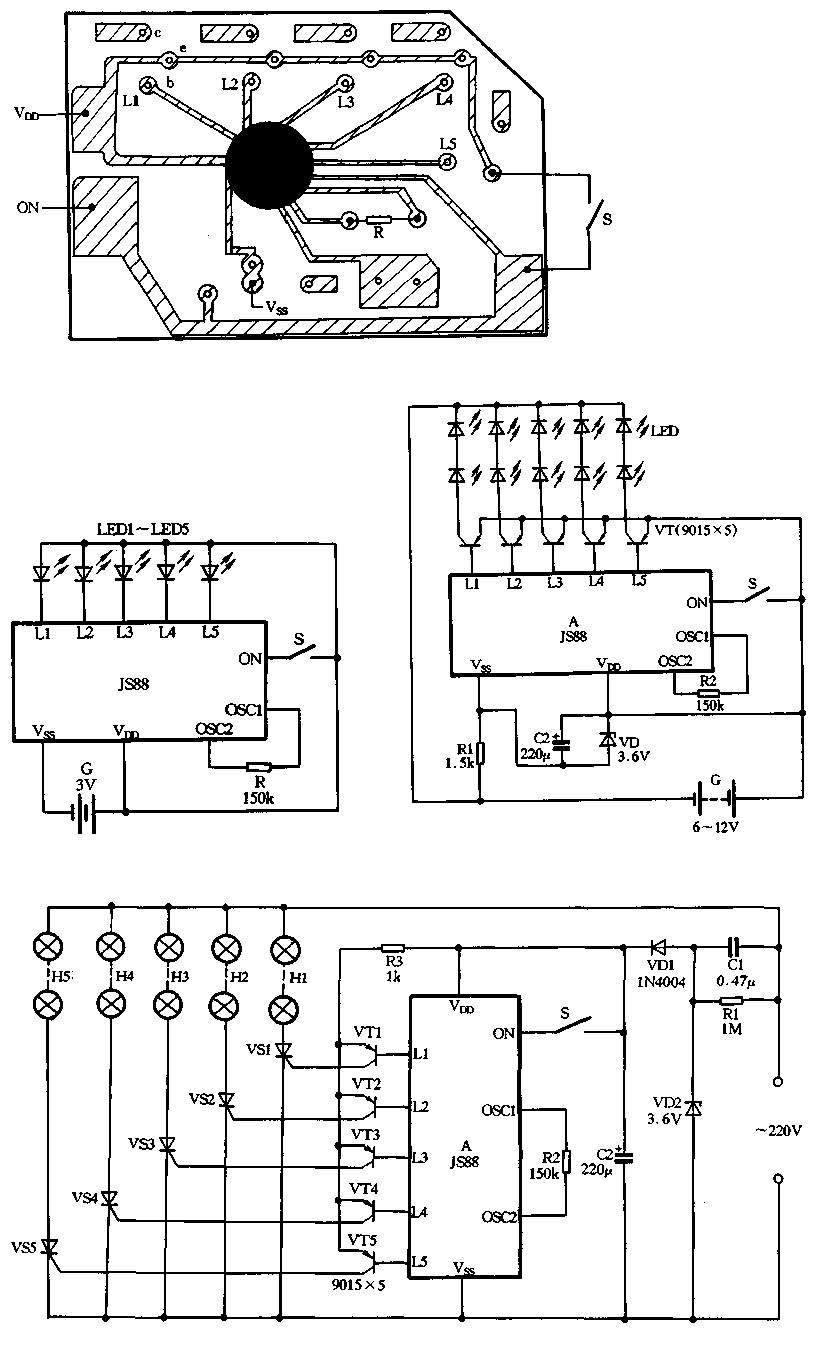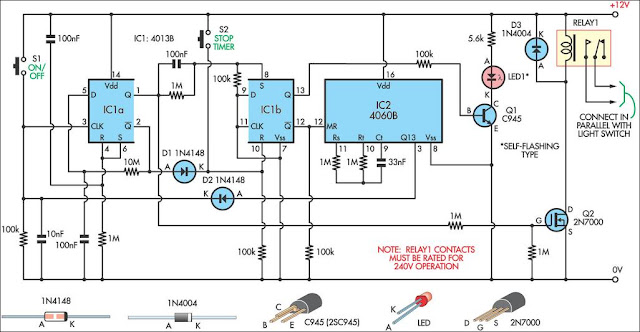
light activated relay

This circuit is similar to the previous one but incorporates a photoresistor to trigger the flip-flop instead of a push button. A bias resistor is placed in series with the photoresistor to ensure that adequate voltage is present at the base of the 2N3904 transistor, allowing it to supply current to the circuit under ambient lighting conditions. The circuit is designed to toggle when the photoresistor is illuminated by a flashlight beam or another rapidly changing light source. Gradual changes in light intensity will not affect the circuit unless the light becomes excessively bright, which would compromise the bias for the 2N3904.
The described circuit utilizes a flip-flop configuration, which serves as a bistable multivibrator. This allows the circuit to maintain a state until an external trigger is applied. In this case, the triggering mechanism is a photoresistor (LDR), which changes its resistance in response to varying light levels. The inclusion of a bias resistor in series with the photoresistor is crucial for establishing the correct operating conditions for the 2N3904 NPN transistor.
The 2N3904 is chosen for its ability to handle moderate current levels and its suitability for switching applications. The bias resistor must be calculated to ensure that the base-emitter junction of the transistor is forward-biased when the light intensity reaches a certain threshold. This threshold is determined by the characteristics of the photoresistor and the environmental lighting conditions.
When the circuit is exposed to a sudden increase in light intensity, such as from a flashlight beam, the resistance of the photoresistor decreases, causing an increase in voltage at the base of the 2N3904. This results in the transistor turning on and allowing current to flow through the collector-emitter path, thus toggling the flip-flop state. Conversely, if the light intensity decreases gradually, the circuit remains unaffected until the light becomes bright enough to alter the bias condition of the transistor.
In summary, this circuit effectively uses a photoresistor for light-sensitive triggering of a flip-flop, providing a novel approach to light-activated switching applications. Proper selection of component values, particularly the bias resistor, is essential for the reliable operation of the circuit under varying ambient light conditions.This is same circuit as above with the addition of a photo resistor to trigger the flip flop instead of a push button. The bias resistor in series with photo resistor was chosen so that sufficient voltage is present at the base of the 2N3904 to supply current to the circuit in ambient lighting conditions.
The circuit should toggle when the photo r esistor is hit by a flashlight beam or other fast changing light source. Slow changes in light intensity will have no effect unless the light gets too bright to maintain sufficient bias for the 2N3904. 🔗 External reference
The described circuit utilizes a flip-flop configuration, which serves as a bistable multivibrator. This allows the circuit to maintain a state until an external trigger is applied. In this case, the triggering mechanism is a photoresistor (LDR), which changes its resistance in response to varying light levels. The inclusion of a bias resistor in series with the photoresistor is crucial for establishing the correct operating conditions for the 2N3904 NPN transistor.
The 2N3904 is chosen for its ability to handle moderate current levels and its suitability for switching applications. The bias resistor must be calculated to ensure that the base-emitter junction of the transistor is forward-biased when the light intensity reaches a certain threshold. This threshold is determined by the characteristics of the photoresistor and the environmental lighting conditions.
When the circuit is exposed to a sudden increase in light intensity, such as from a flashlight beam, the resistance of the photoresistor decreases, causing an increase in voltage at the base of the 2N3904. This results in the transistor turning on and allowing current to flow through the collector-emitter path, thus toggling the flip-flop state. Conversely, if the light intensity decreases gradually, the circuit remains unaffected until the light becomes bright enough to alter the bias condition of the transistor.
In summary, this circuit effectively uses a photoresistor for light-sensitive triggering of a flip-flop, providing a novel approach to light-activated switching applications. Proper selection of component values, particularly the bias resistor, is essential for the reliable operation of the circuit under varying ambient light conditions.This is same circuit as above with the addition of a photo resistor to trigger the flip flop instead of a push button. The bias resistor in series with photo resistor was chosen so that sufficient voltage is present at the base of the 2N3904 to supply current to the circuit in ambient lighting conditions.
The circuit should toggle when the photo r esistor is hit by a flashlight beam or other fast changing light source. Slow changes in light intensity will have no effect unless the light gets too bright to maintain sufficient bias for the 2N3904. 🔗 External reference





